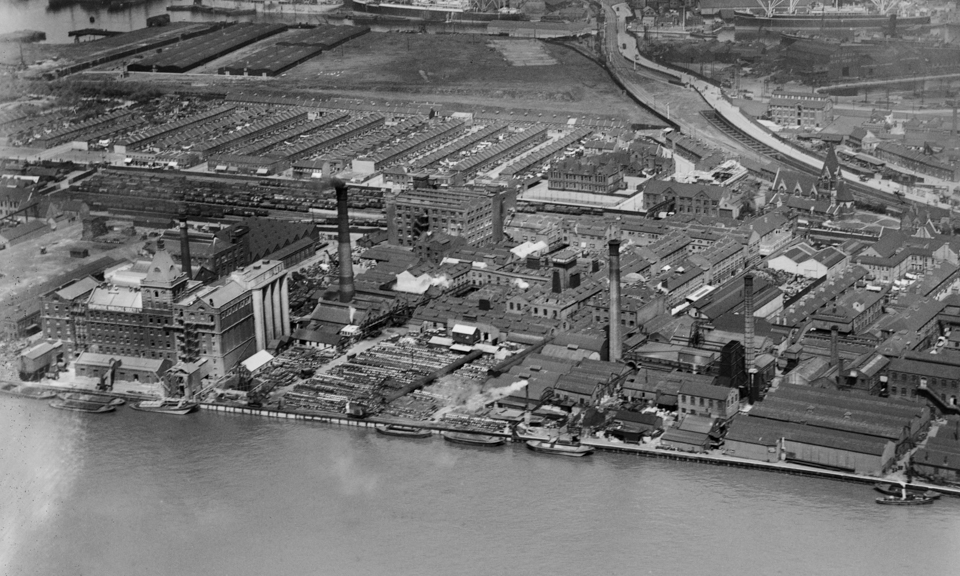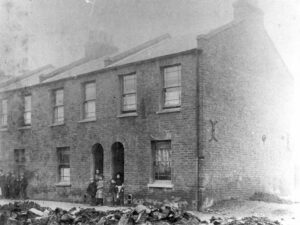Today, Silvertown and North Woolwich occupy a man-made island, bounded by the Royal Docks to the north and the Thames to the south, accessible only by bridge, ferry, or tunnel.
Industrial origins
At the turn of the 19th century, the area along the Thames to the west of the River Lea was a desolate marshland called Plaistow Level used for grazing cattle. The completion of the Royal Victoria Dock in 1855 spurred growth and unburdened by London’s stricter planning regulations, Plaistow Level became an attractive area for investment.
Silvertown was named after its first resident, when in 1852 the S.W. Silver & Company moved to the area from Greenwich and established a rubber works, originally to make waterproof clothing. This subsequently developed into the works of the India Rubber, Gutta Percha and Telegraph Works Company, a leading manufacturer of telegraph cables essential to communications between Britain and its colonies. The reputation of the company was such that the word ‘Silvertown’ was accepted as a guarantee of good sound workmanship the world-over.
Other industries soon followed, and by the 1860s several manure and chemical works and petroleum storage depots had been set up, making dangerous and unpleasant products. Ordnance Survey maps show that even in the late 1860s however, development was sparse.
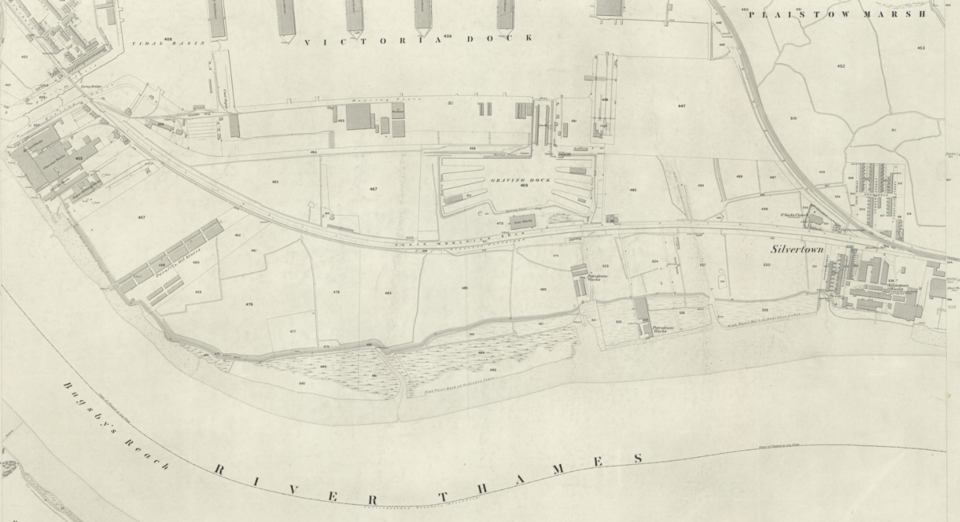
Tate and Lyle
To refine sugar for human consumption, factories were best set up close to where the raw sugar disembarked. Therefore, the Royal Victoria Dock made Silvertown an ideal location. In 1877 Henry Tate set up a sugar cube factory at Tay Wharf in Silvertown and four years later Abram Lyle began to produce Golden Syrup at Plaistow Wharf. Treacle refineries and jam makers also established themselves here, giving rise to the nickname ‘the sugar mile’. The two companies merged in 1921 to create Tate & Lyle, and by 1939 was the largest refiner in the world, producing around 14,000 tons a week. It employed over 5,000 residents at its peak. Despite suffering from German bombing during the Blitz the company continued to flourish in the post-war and its factory still dominates the area.
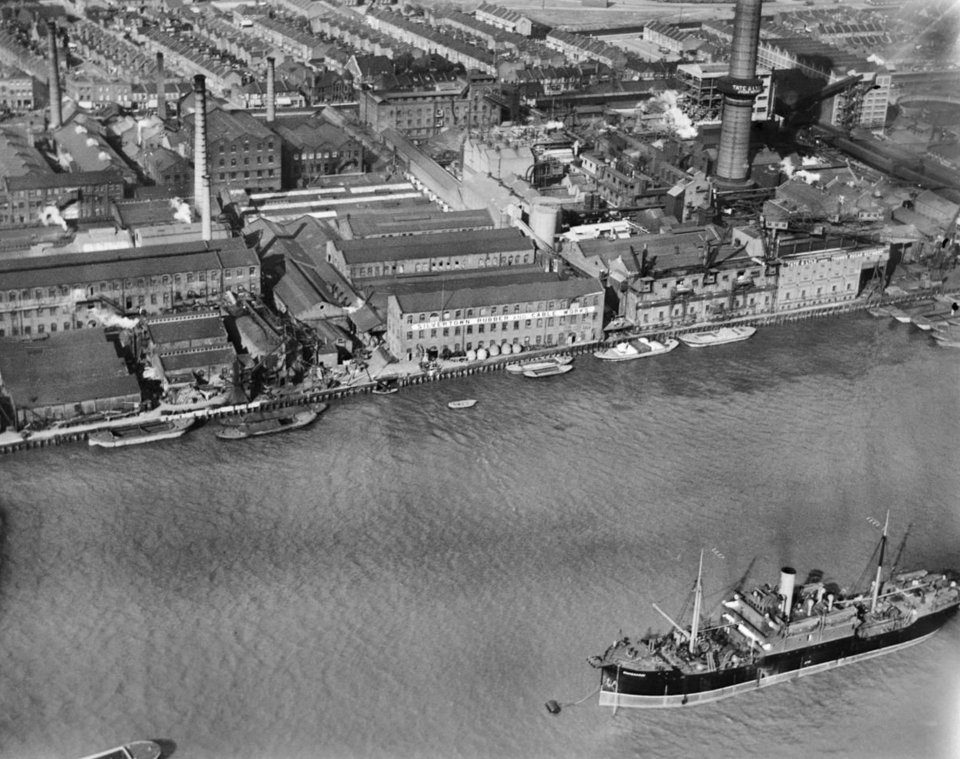
An interesting place to live
The opening of the docks and the building of factories quickly increased the area’s population. By 1897, approximately 14,000 people resided in Silvertown and North Woolwich. Many of these were immigrants from other parts of London, the UK, and later from overseas.
Short rows of cheap terraced houses were developed, often running right to the edge of the docks. It was an unpleasant place to live, with factories pumping out smoke and noxious fumes, and the stench of bone manure and soap works, along with the constant shriek of railway engines and the foghorns of steamboats.
Despite this, the community benefited from two beautiful parks which provided welcome greenery for those who spent their days living crammed around factories.
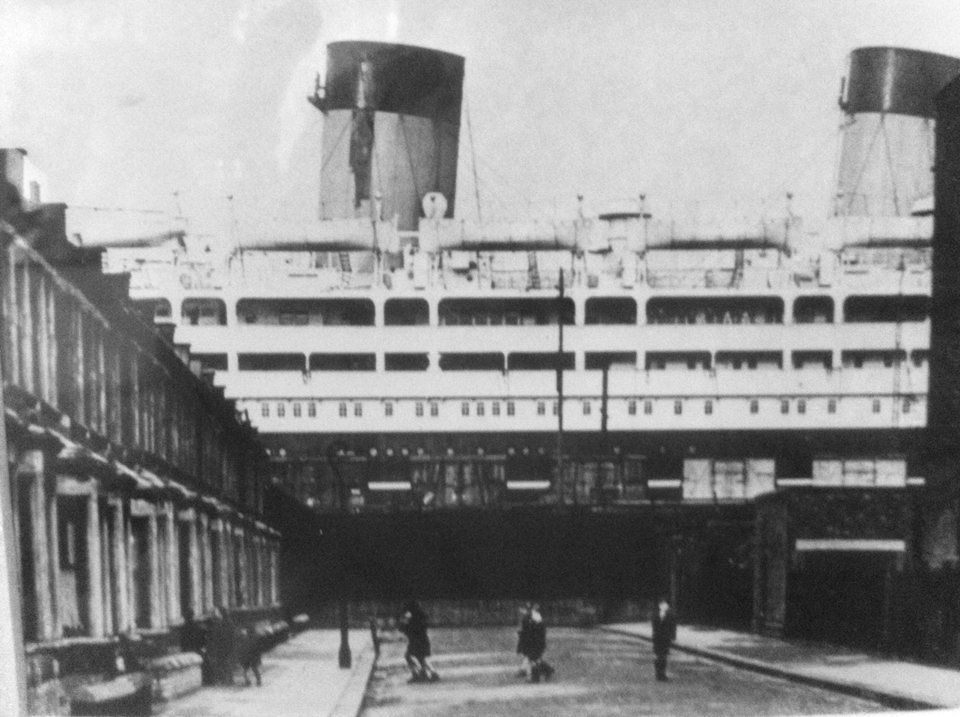
20th century destruction and development
The loose regulation that allowed rapid industrialisation and profiteering in Silvertown was not built on the back of strong workers’ rights. Accidents were extremely common. On 19 January 1917, parts of Silvertown were devastated by a massive TNT explosion at the Brunner-Mond munitions factory. 73 people died and hundreds were injured in one of the largest explosions ever experienced in the British Isles.
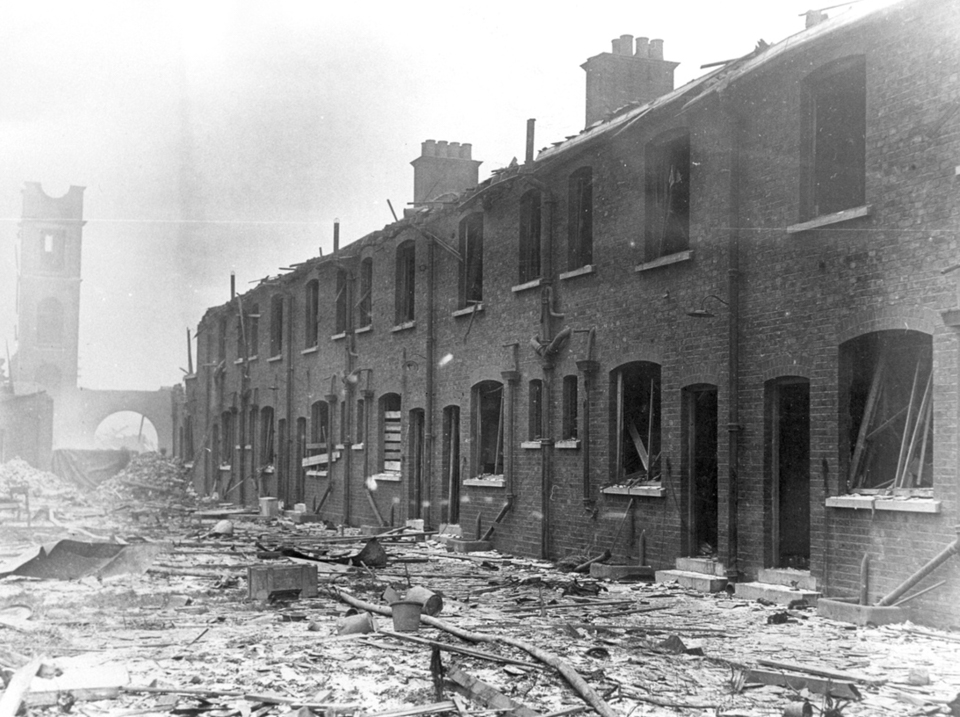
The area was further devastated during the Blitz of 1940 when it was one of the primary targets of Luftwaffe bombers. 146 people were killed on the first night alone, with the bombardment lasting for 56 consecutive nights. The area was devastated, with houses destroyed and factories damaged. At one point North Woolwich became cut off on all sides with residents evacuated up the Thames on any vessel available.
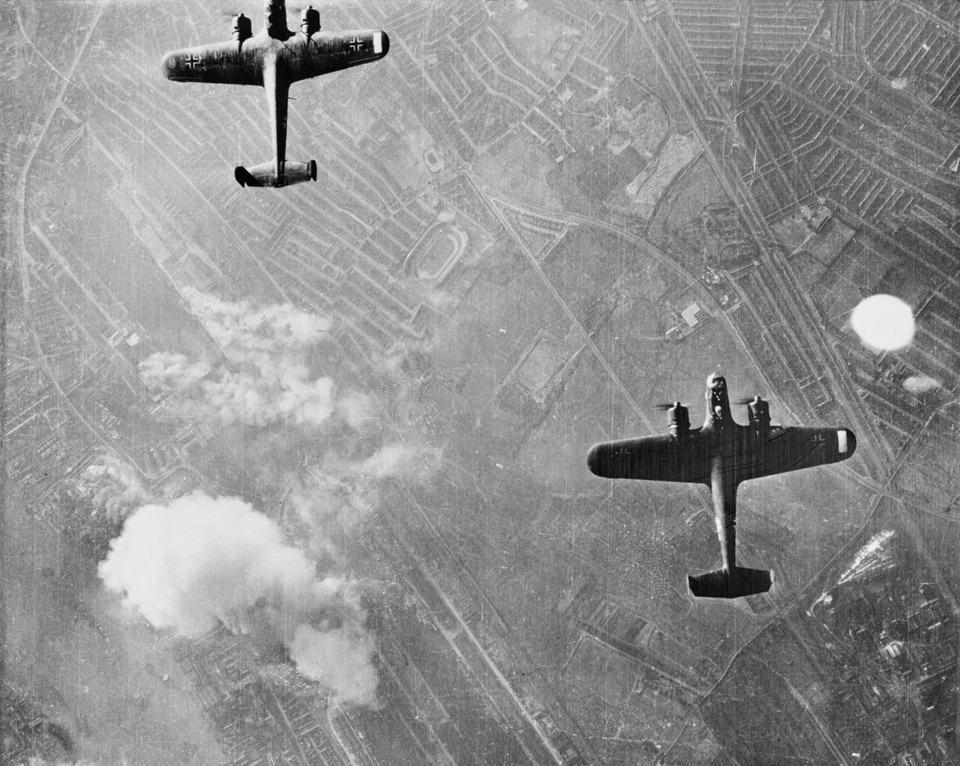
Although the area was prone to flooding, but The Great Flood of 1953 saw factories brought to a standstill as water flooded in from the docks, roads filled with water, sewers were blocked, and pumping stations broke down.
The German bombers had greatly reduced the number of available houses, and by the mid-1960s Silvertown had the highest number of slums across the country. New council housing was built, often flats and high-rise buildings.
Throughout the 20th century, North Woolwich and Silvertown continued to evolve. The decline of traditional industries in the latter half of the century led to economic restructuring and changes in the local landscape. The docks have been repurposed for residential, commercial, and recreational use.
Further reading

